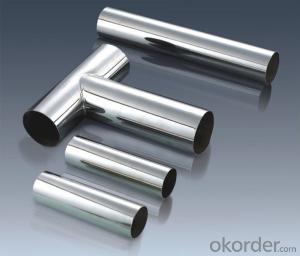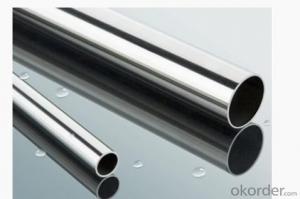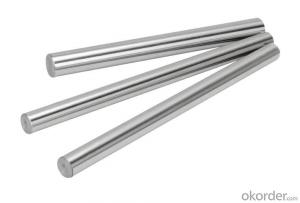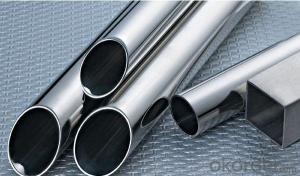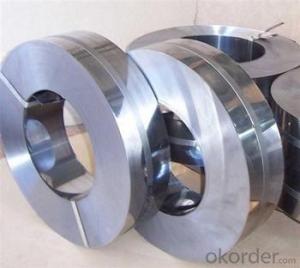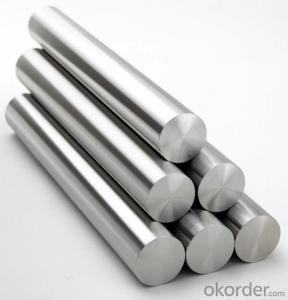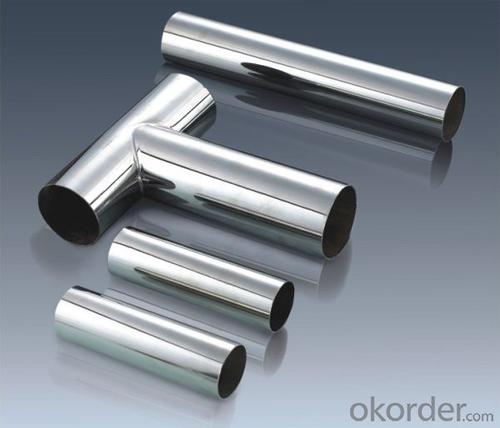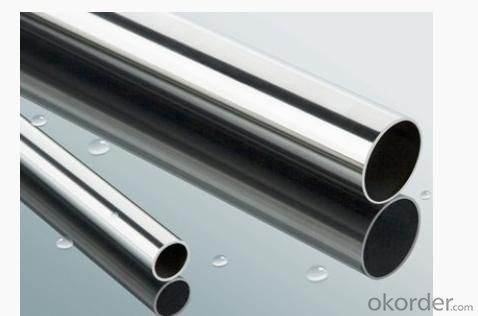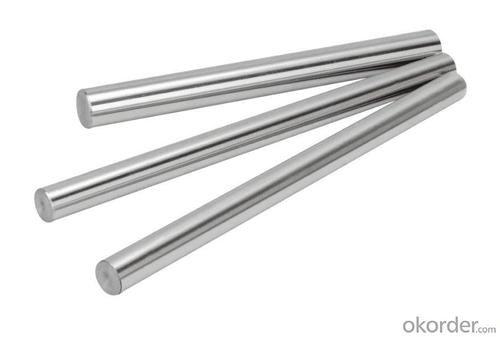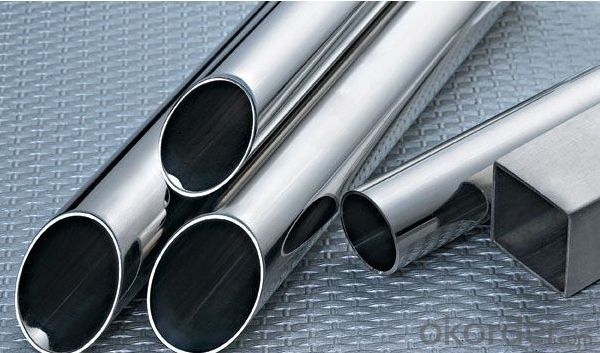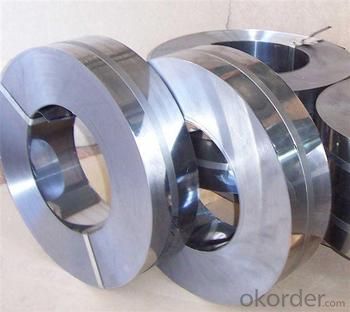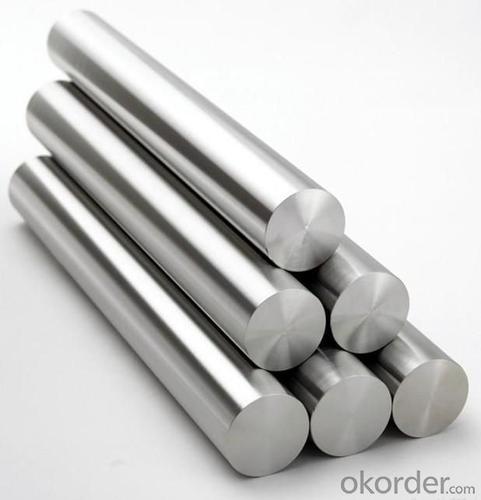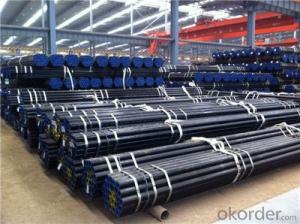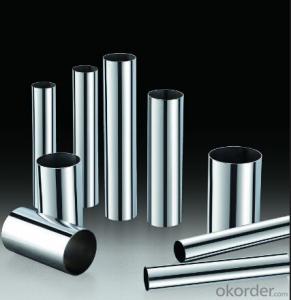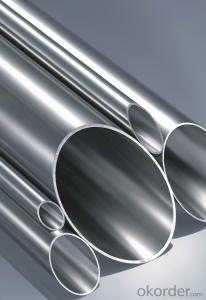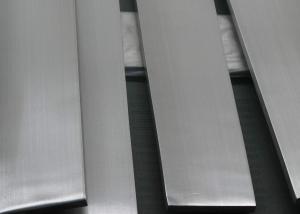Stainless Steel tube 304 with finest quality
- Loading Port:
- Shanghai
- Payment Terms:
- TT OR LC
- Min Order Qty:
- 1000 m.t
- Supply Capability:
- 1000000 m.t/month
OKorder Service Pledge
OKorder Financial Service
You Might Also Like
Stainless steel 304
Product Information of stainless steel:
- Width: customized
- Surface: 2B/BA/6K/8K/NO.4/HL.
- Thickness: 0.3mm - 3.0mm.
- Delivery time: 15-25 days.
- Length : As customer's requirement.
- Package: With export standard packing or customize packing.
- Payment Terms: T/T (30% deposit pay in advance and the balance before shipment) , irrevocable L/C.
Company advantage:
-Top Equipments, Leading In The Industry.
- Professional Team, Leading Innovation.
- Huge Supply Capacity Advantage, Timely and Effective Delivery.
- Modern Logistic, Fact and Convenient.
- Precise Manufacturing, Exquisite Products.
- Serve People, Create Value.
- Dimensional Network, Powerful Expansion.

- Q: Can stainless steel pipes be used for pharmaceutical processing equipment?
- Yes, stainless steel pipes can be used for pharmaceutical processing equipment. Stainless steel is a preferred material in the pharmaceutical industry due to its excellent corrosion resistance, durability, and ease of cleaning. It is resistant to chemicals, corrosion, and high temperatures, making it suitable for handling and transporting various pharmaceutical substances. Additionally, stainless steel pipes have a smooth surface that minimizes the risk of contamination and allows for easy cleaning and sterilization. Overall, stainless steel pipes are widely used in pharmaceutical processing equipment to ensure the integrity and quality of pharmaceutical products.
- Q: Can stainless steel pipes be used for structural purposes?
- Certainly, structural purposes can indeed employ stainless steel pipes. Stainless steel, renowned for its strength, durability, and resistance to corrosion, proves to be an exceptional substance for structural uses. Found commonly in industries like construction, architecture, and engineering, stainless steel pipes serve as structural support and facilitate the conveyance of fluids and gases. They possess the capability to endure heavy loads, extreme temperatures, and even harsh environmental circumstances, rendering them fitting for an extensive array of structural applications. Furthermore, stainless steel pipes offer customization options through various grades, sizes, and thicknesses, enabling them to cater to specific structural prerequisites.
- Q: What wire is used for welding of 316 stainless steel line?
- Inspection of assembly and tack welds;1, check the geometry and shape after assembly, whether it conforms to the provisions of the drawings. :2, assembly and assembly clearance is 1.5 - 2mm, using TIG welding, three point positioning welding,The welding seam position for the clock 3 points, 9 points and 12 points, the welding materials used should be the same as the welding materials, welding length is 10 15mm, welding requirements and guarantee no defect, the wrong side is less than 1.5 2mm.3, the group is not allowed to use strong assembly, the joint wall must be flush.4, when welding, there must be no air, slag, tungsten and crack.
- Q: How do you prevent stainless steel pipes from corroding?
- There are several measures that can be taken to prevent corrosion in stainless steel pipes: 1. The selection of the appropriate grade of stainless steel is crucial. Each grade has varying levels of corrosion resistance, so it is important to choose a grade that is suitable for the specific environment in which the pipes will be used. For environments that are more corrosive, it is recommended to use higher grades such as 316 stainless steel. 2. Proper installation and maintenance are essential. Ensuring that the pipes are installed correctly with the appropriate gaskets, seals, and fittings will prevent any gaps or leaks that could allow moisture or corrosive substances to enter. Regular inspections and maintenance should be conducted to identify and repair any damage or potential sources of corrosion. 3. Keeping the pipes clean and dry is important. Regular cleaning will remove any contaminants or corrosive substances that may have accumulated. It is important to avoid using harsh chemical cleaners that can harm the protective oxide layer on the surface of the stainless steel. Additionally, prolonged exposure to water or moisture should be avoided to keep the pipes dry and prevent corrosion. 4. The application of protective coatings can provide an additional layer of protection against corrosion. There are specific coatings or paints designed for stainless steel that act as a barrier, preventing direct contact between the stainless steel and corrosive substances. 5. In highly corrosive environments, cathodic protection can be utilized. This involves the use of sacrificial anodes or impressed current systems to divert the electrical current away from the pipes, thus protecting the stainless steel from corrosion. By following these preventive measures, the risk of corrosion in stainless steel pipes can be significantly reduced, leading to a longer lifespan for the pipes.
- Q: Can stainless steel pipes be insulated?
- Yes, stainless steel pipes can be insulated. Insulation can be added to stainless steel pipes to prevent heat loss, condensation, and to enhance energy efficiency in various applications such as industrial processes, HVAC systems, and plumbing.
- Q: Can stainless steel pipes be insulated with polyimide?
- Indeed, polyimide is a suitable material for insulating stainless steel pipes. Its exceptional thermal stability, electrical insulation properties, and resistance to chemicals have made it highly sought-after in numerous industries. With the ability to endure high temperatures and exhibit low thermal conductivity, polyimide proves to be an optimal selection for insulating stainless steel pipes, particularly in scenarios where heat resistance and energy preservation are critical. By implementing polyimide insulation, heat transfer can be minimized, condensation can be avoided, and the overall efficiency and performance of stainless steel pipes can be enhanced.
- Q: What is the difference between schedule 10 and schedule 160 stainless steel pipes?
- The difference between schedule 10 and schedule 160 stainless steel pipes lies in their respective wall thicknesses and pressure ratings. Schedule 10 stainless steel pipes have a thinner wall thickness compared to schedule 160 pipes. This means that schedule 10 pipes are lighter and have a smaller diameter compared to schedule 160 pipes. The wall thickness of schedule 10 stainless steel pipes is typically 0.109 inches, while schedule 160 pipes have a wall thickness of 0.375 inches. The thicker wall of schedule 160 pipes allows them to withstand higher pressures and handle more heavy-duty applications compared to schedule 10 pipes. Additionally, schedule 160 stainless steel pipes have a higher pressure rating compared to schedule 10 pipes. Schedule 160 pipes are designed to handle higher levels of pressure, making them suitable for applications that require a high level of strength and durability, such as industrial processes or high-pressure fluid transportation systems. In summary, the main difference between schedule 10 and schedule 160 stainless steel pipes is their wall thickness and pressure rating. Schedule 10 pipes have a thinner wall and lower pressure rating, while schedule 160 pipes have a thicker wall and higher pressure rating. The choice between the two will depend on the specific requirements and demands of the application in question.
- Q: Can stainless steel pipes be used in high-pressure applications?
- Yes, stainless steel pipes can be used in high-pressure applications. Stainless steel is known for its excellent corrosion resistance, durability, and strength, making it an ideal material for handling high-pressure fluids or gases. The high-pressure resistance of stainless steel pipes is due to their high tensile strength and ability to withstand extreme conditions without deformation or failure. Additionally, stainless steel pipes can maintain their properties at both high and low temperatures, ensuring their reliability and performance in high-pressure applications.
- Q: What is the standard size range for stainless steel pipes?
- The stainless steel pipe size range varies depending on the industry and application it is being used for. Generally speaking, stainless steel pipes come in a wide array of sizes. They can start from small diameters, measuring about 0.5 inches (12.7 mm), and go all the way up to large diameters of 48 inches (1219 mm) or even larger in certain cases. The wall thickness of these pipes can also differ, ranging from thin-walled pipes with a few millimeters thickness to heavy-walled pipes with thicknesses exceeding an inch. Determining the specific size range for stainless steel pipes depends on factors like the intended use, pressure requirements, and adherence to industry standards. It is crucial to consult relevant specifications and standards to accurately ascertain the appropriate size range for a given application.
- Q: What is the average lifespan of stainless steel pipes?
- There are several factors that can affect the average lifespan of stainless steel pipes. These include the quality of the stainless steel used, the installation environment, and the maintenance and care received. However, it is generally estimated that stainless steel pipes can last for 50 to 100 years or even longer. The reason for this longevity is the natural resistance of stainless steel to corrosion, which helps protect the pipes from rust and other forms of deterioration. Furthermore, stainless steel pipes are renowned for their strength and durability, enabling them to withstand high temperatures, pressure, and harsh conditions. When properly installed and maintained, stainless steel pipes can offer reliable and lasting performance in various applications, such as plumbing, industrial processes, and construction projects.
Send your message to us
Stainless Steel tube 304 with finest quality
- Loading Port:
- Shanghai
- Payment Terms:
- TT OR LC
- Min Order Qty:
- 1000 m.t
- Supply Capability:
- 1000000 m.t/month
OKorder Service Pledge
OKorder Financial Service
Similar products
Hot products
Hot Searches
Related keywords
